Weekend Workshop: Using drones to spark creativity
Trent Reznor doesn’t underestimate the power of the drone. Neither should you.
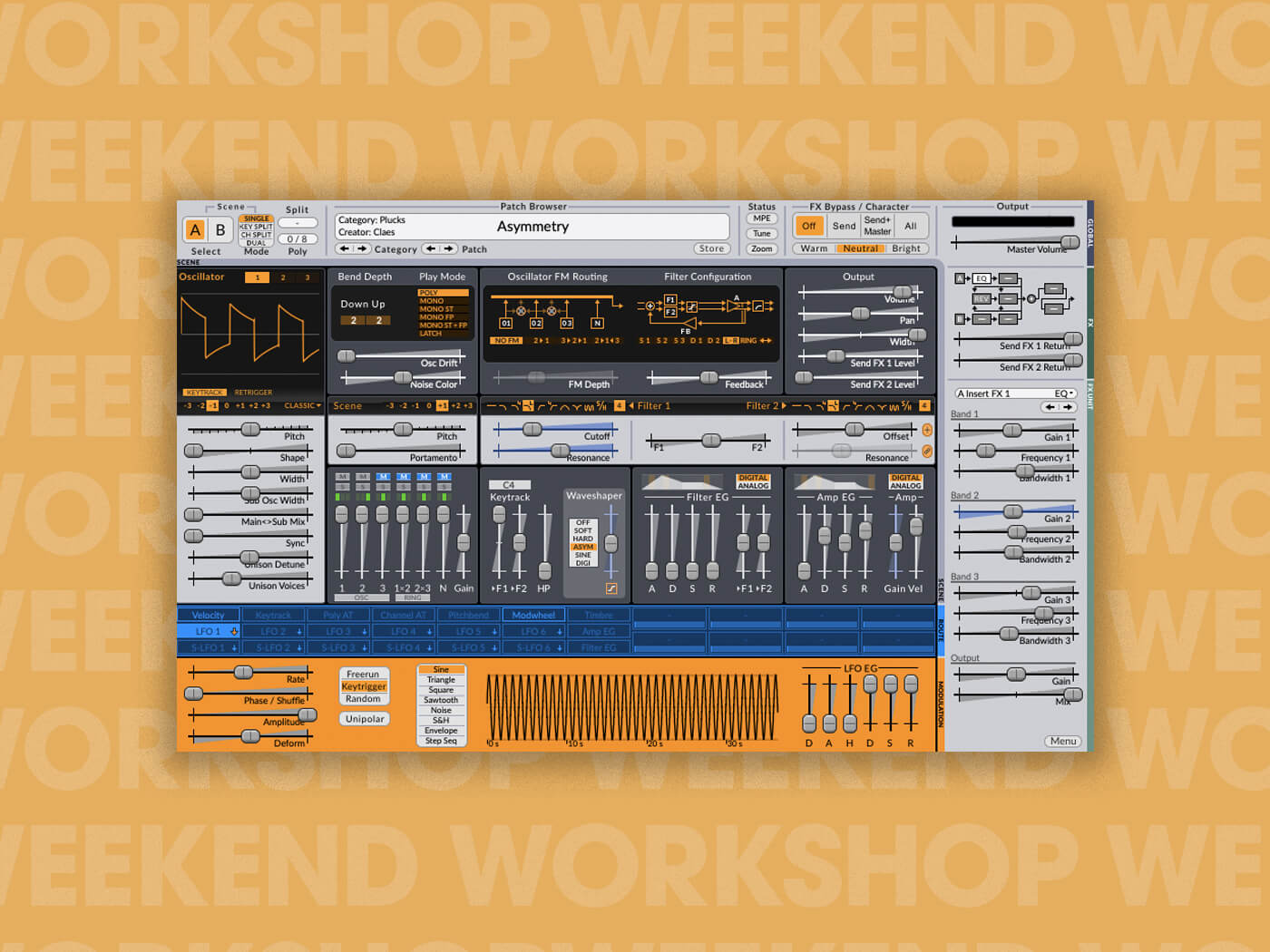
Weekend Workshop Drones
It’s true. The word ‘drone’, isn’t remotely inspiring. You could be forgiven for forgetting about them altogether and using a million other songwriting devices and production methods to help spark new ideas. However, you should never underestimate the power of the humble drone.
The problem of writer’s block is one we creative musicians have most likely encountered on many occasions. And, you can probably just live with it if you’re happy writing an album a year, or if you just enjoy making music in your spare time. However, the anxiety around writer’s block increases when writing music becomes your living. If you aren’t writing those 100 songs a year and you can’t pay your rent, writer’s block becomes a serious problem that deserves closer attention.
I have been using drones to kick start creative ideas for years, and it has changed how I write for the better. I don’t use them all the time, but when time is ticking, and I have two weeks to write ten songs for an important client, it has helped me find inspiration rather than waiting for it to find me.
The idea is simple. You’re playing on a guitar or a synth trying to come up with a melody and nothing is feeling good. You’re anchorless. However, lay down a single note drone and try playing over the top, and suddenly, you have harmony! You have notes working together or clashing. You have tension, suspensions and sweet resolution. And you also have a key! Add some bass, and you have even more to play with. You may even decide to take the drone out later. What I love about this approach is that it removes the pressure for that first thing you record in your session to be amazing. It can just be functional, and it can be there to help you get to the real idea that deserves being turned into a full track.
To see how effective this can be, just listen to Hand Covers Bruise by Trent Reznor and Atticus Ross from The Social Network score. The drone is what glues all those elements together – and without it – the piano motif is fairly unremarkable.
In this Weekend Workshop, we’ll be showing you how to use drones to trick inspiration into action and help you come up with solid ideas quickly. We will be using the free Surge synth – and only presets – so no synthesis knowledge is required! Also, the only mixing I will be doing is with volume to give things a rough balance. The point of this is to write some music. So, for now, forget about effects, EQ and Compressors, open your DAW and get writing.
What you’ll need:
- A DAW
- Surge synth, available for free, here.
1. Finding a suitable drone
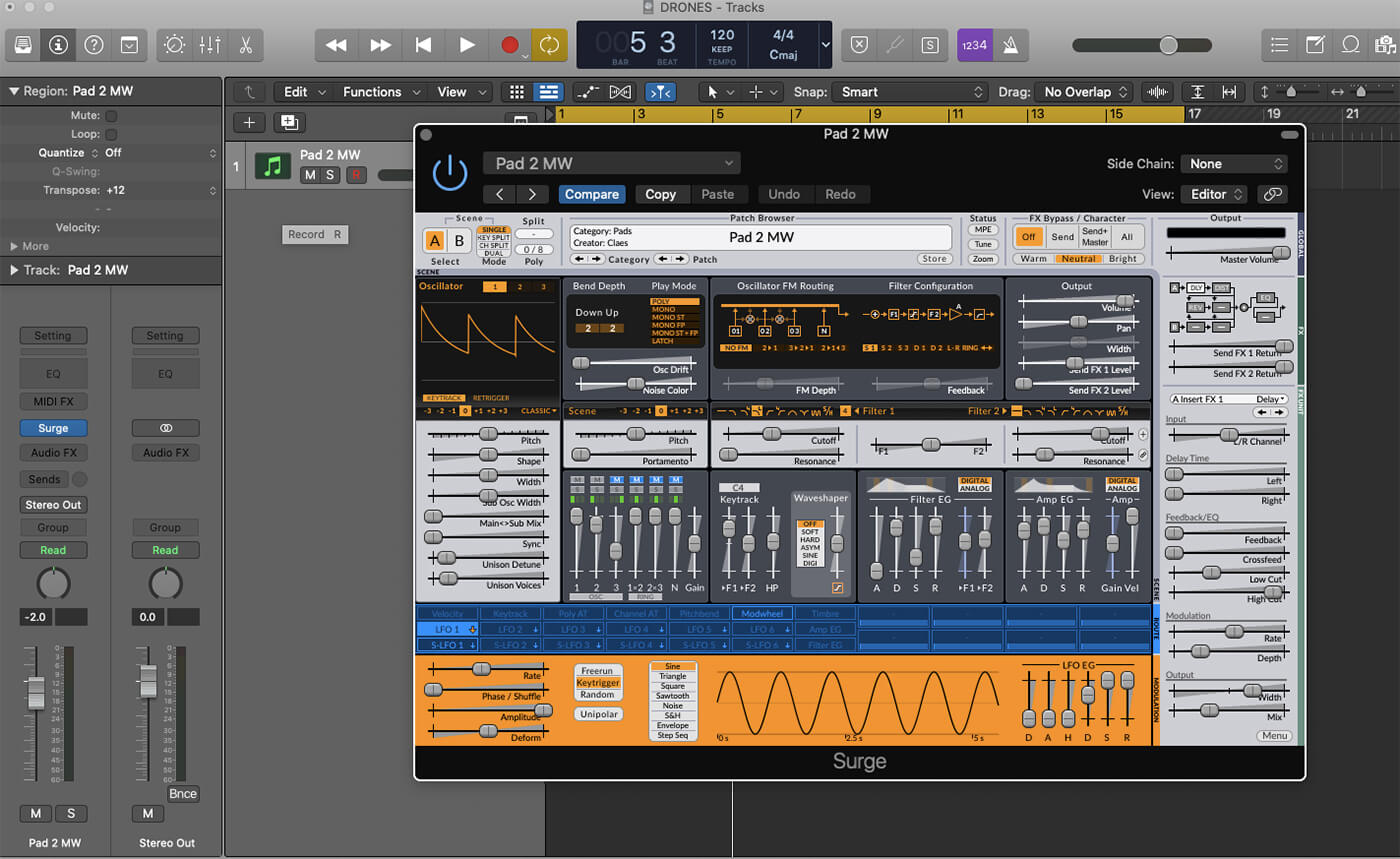
In my experience, there is no particular science to finding a good drone, but it will depend on the type of track you are writing. For something more expressive and complex, synths such as Omnisphere and Absynth have thousands of drones and soundscapes that can inspire, but for this exercise, we are going to keep things simple. Open Surge, navigate to Pads and then load up Pad 2 MW.
Next up, record a 16-bar drone on one note. In this case, we going to use D – and we are sticking to Logic’s default tempo of 120 BPM. It can be tempting to play a deep drone, but we want this to be in the middle register. The reason for this will become clear later.
2. Laying down a pulse
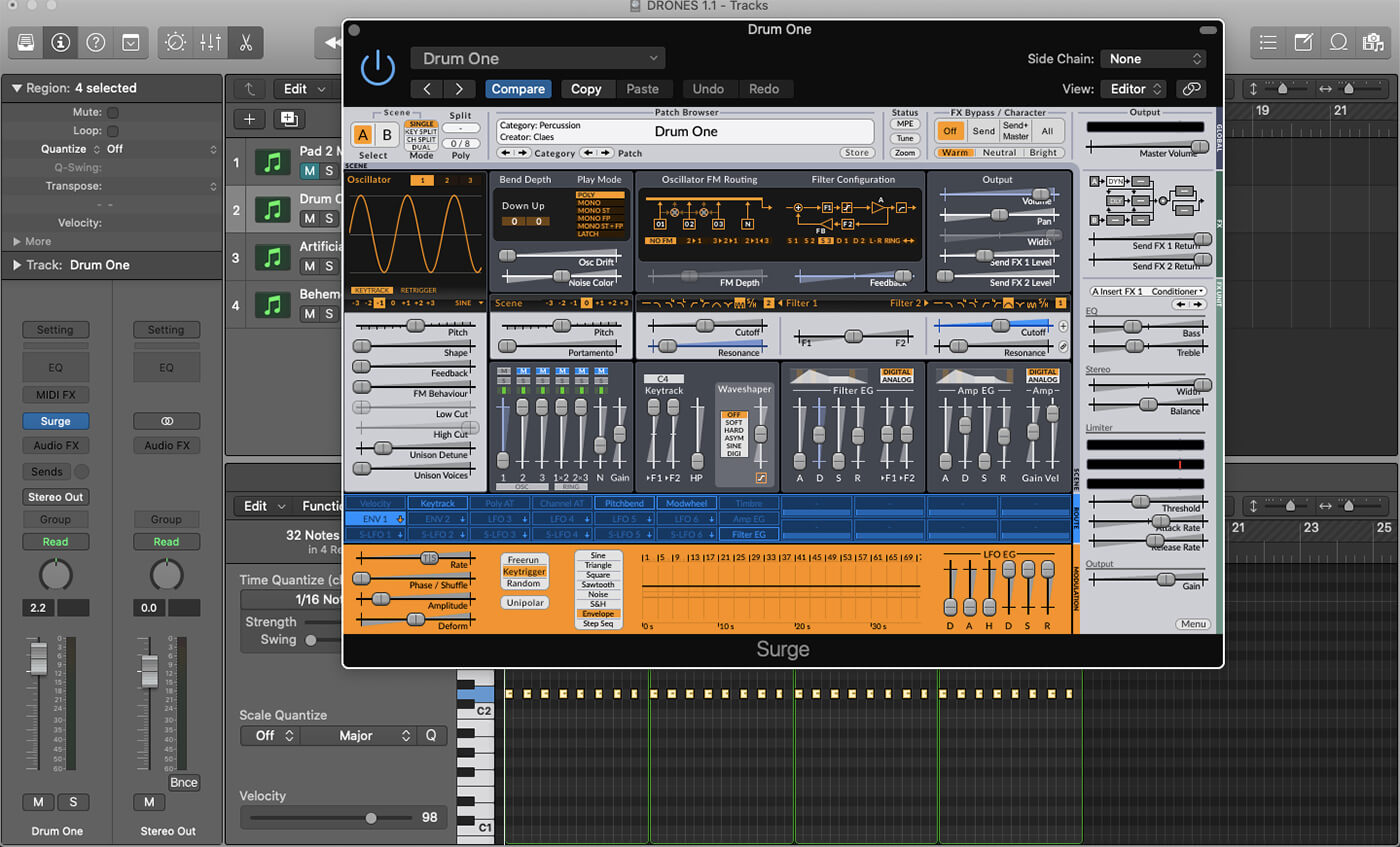
Record a small amount of percussion using a Kick drum sound from Surge. This should help anchor the tempo, and allow us to hear which notes are on or off the beat relative to the drone without having a pesky metronome involved. I am using the Drum One preset from the percussion menu and I’ve recorded a basic pattern on beats 1 and 3 of each bar that gives us a pulse without getting in the way.
3. Finding a melody
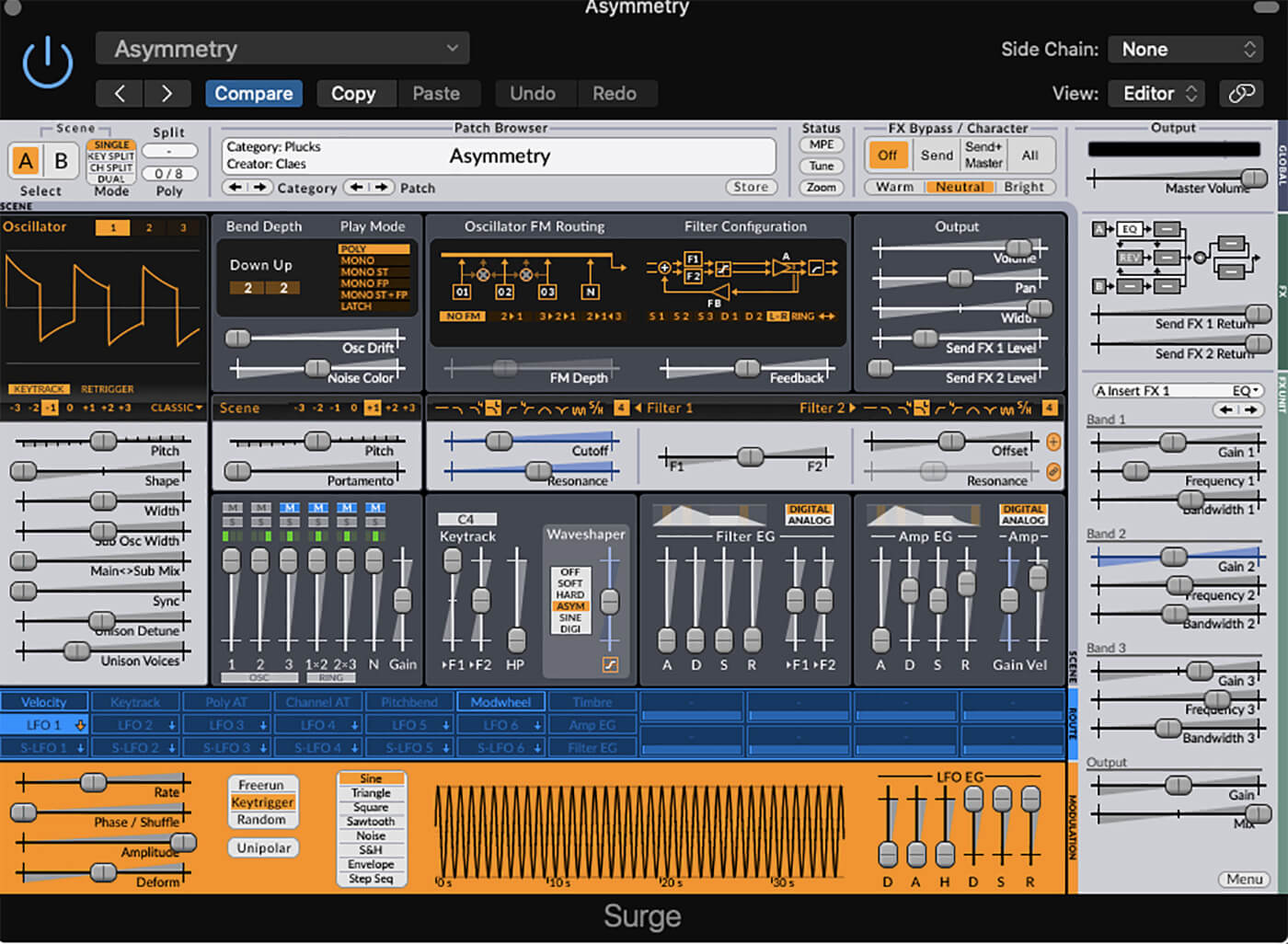
Now that we have our drone recorded, it is time to start getting creative by playing around and finding a riff or melody that we like. Load a different preset from Surge this time. To complement the drone, try a plucked sound. In this example, we’re using the Plucks patch called Asymmetry.
I am going for a minimal film score vibe, so I’m using some notes that give a bit of suspension and resolution. Try doing the same in your project and listen for the pitches that sit well together and those that don’t.
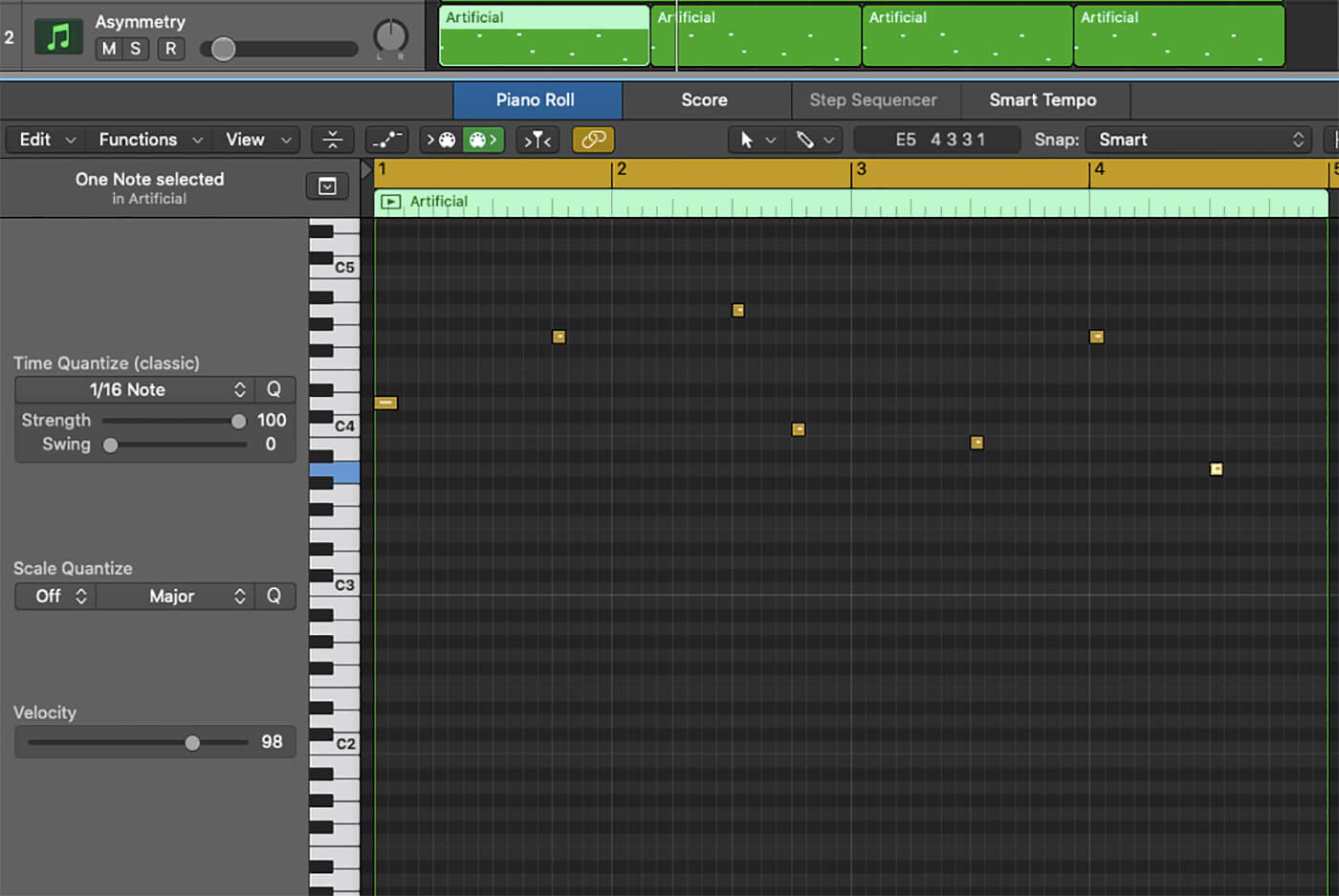
This really is a chance for you to experiment with different sounds and melodies until you stumble across something you like. If this feels like unfamiliar terrain, just follow along with the pattern used here, and feel free to copy our parts. We now have a drone with a melody that is sounding interesting.
4. Having fun with basslines
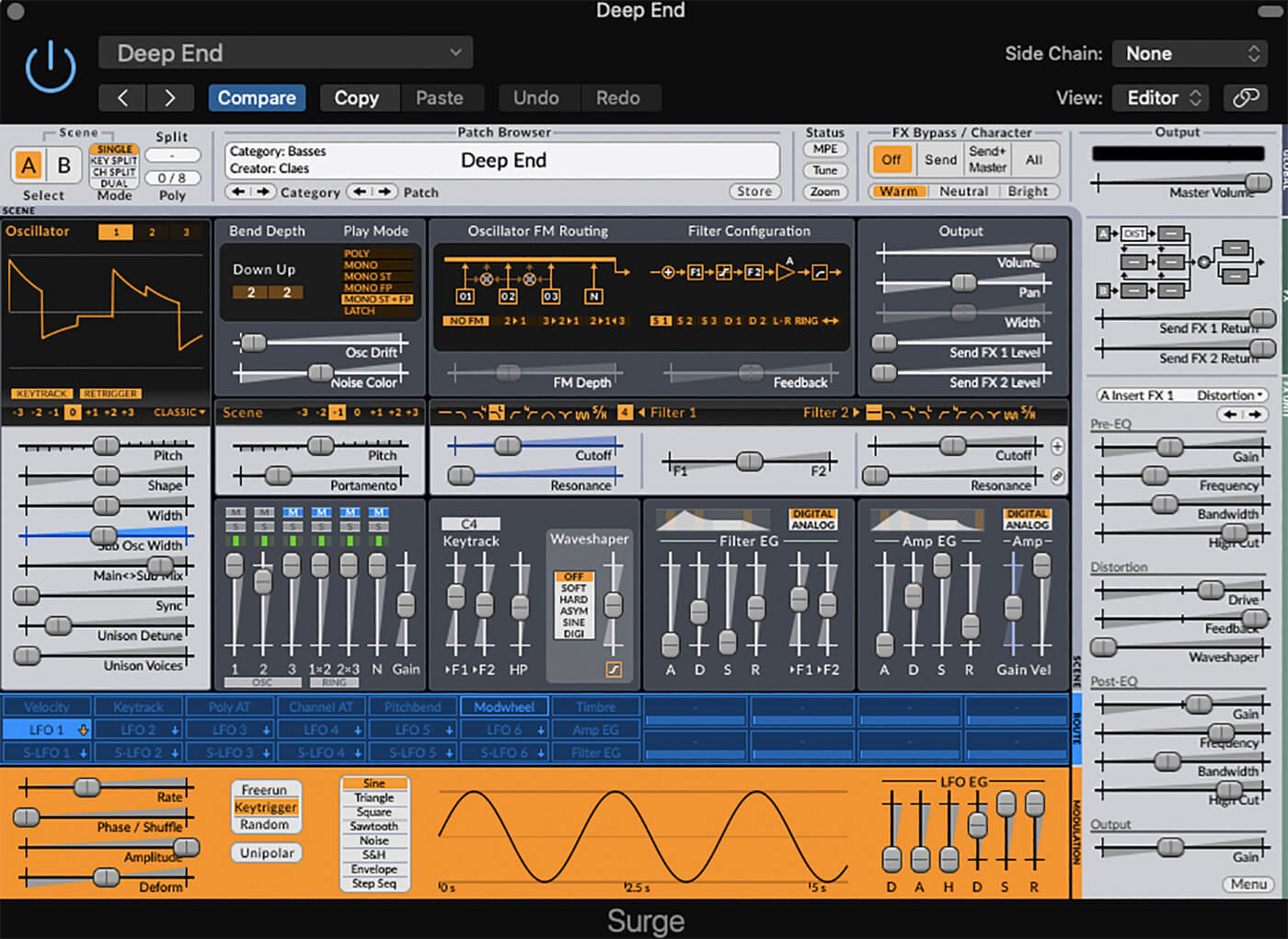
For us, the next stage in our process is the most fun! We have a melody and some kind of key signature that we are working in. The bassline can change everything, particularly for this style of music. For film scoring, a repeating melodic idea with a bassline that changes and evolves can really develop a scene. This is because the harmonies we are creating each have a sound or emotion that they evoke.
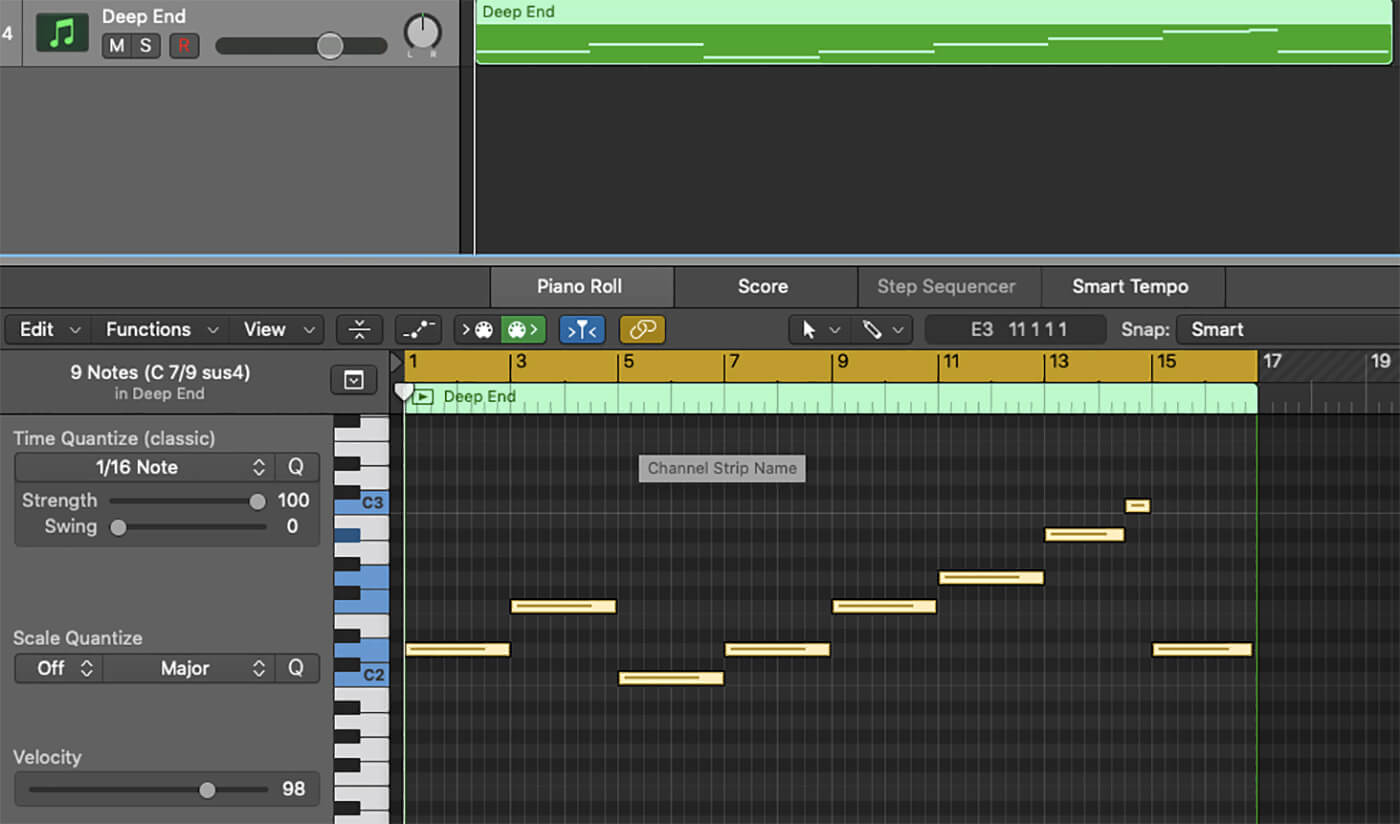
In this example, we’re using a low, subby bass preset from Surge called Deep End, and playing long, held notes. Again, as you move the bass note relative to the drone, pay attention to the emotions they each provoke.
5. Next Steps
You could loop these bass notes like a riff or carry on for eternity, never fully resolving. The most important thing is that, by this point, you should have a musical idea that could be worth developing into a full song or track. It may be fine as it is too, in which case you can start using some reverbs, distortions and modulation effects to make things sound even deeper.
An interesting exercise at this stage is to take the drone out of your track and see what you are left with. What started as a very important piece of the track has now been taken away – and guess what – the house is still standing.
The piece of music we have made today has taken minutes to program and is already yielding some satisfying results. Bear in mind that the results may not always be pleasing, but the point is to get you from nothing to something quickly, and to avoid hours of preset-hopping in search of inspiration. You really can grab the bull by the horns and start being creative as soon as you open your DAW.
There are some fantastic examples of music that make use of this type of arranging. One is the marvellous Love on a Real Train by Tangerine Dream, and another is the dreamy Illusion of Time by Alessandro Cortini and Daniel Avery.
However, regardless of what music you make and what equipment you have, there are times where we all need a little extra help to get us into a creative zone. Sometimes a simple drone can lure us into a different headspace and give us the foundations we need to create beautiful melodies, basslines and ultimately songs out of absolutely nothing.
We’d love to hear what unusual sound you make using drones. Share your musical explorations with the MusicTech Creator Community Group on Facebook, and let us know what other freeware tutorials you’d like to see.
Check out more Weekend Workshops here.